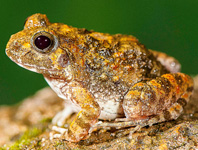Abstract
Stethorus forficatus sp. nov. and Stethorus tetranychi Kapur (Coccinellidae: Stethorini) are reported as predators of the citrus hindu mite, Schizotetranychus hindustanicus (Hirst), from the southern Indian state of Tamil Nadu. Stethorus forficatus sp. nov. is described and illustrated with diagnostic notes on S. tetranychi and S. vietnamicus Hoàng, morphologically its closest relatives. In a remarkable case of larval mimicry in Stethorus, the larva of this species mimics the larvae of S. tetranychi and S. pauperculus Weise. Stethorus curvus Hoàng, 1985 is reduced to a new junior synonym of Stethorus keralicus Kapur, 1961 (syn. nov.).
References
Daniel, M. (1976) Biology and predatory habits of the ladybird beetle, Stethorus keralicus Kapur (Coleoptera: Coccinellidae), predatory on the palm mite. Journal of Plantation Crops, 4 (1), 7–9.
Ferragut, F., Navia, D. & Ochoa, R. (2013) New mite invasions in citrus in the early years of the 21st century. Experimental and Applied Acarology, 59, 145–164.
https://doi.org/10.1007/s10493-012-9635-9Hirst, S. (1924) On some new species of red spider. Annals and Magazine of Natural History, Series 9, 14, 522–527.
Hoàng, D.N. (1979) Ba loai bo rua moi thuoc phan ho Scymninae (Coccinellidae). Viet Nam. Tap Chi Sinh Vat Hoc, 1 (2), 11–15.
Hoàng, D.N. (1985) Collection of the genus Stethorus Weise (Coleoptera, Coccinellidae) from Vietnam. In: Medvedev, L.N. (Ed.), Insects of Vietnam. Nauka, Moscow, pp. 27–29.
Kapur, A.P. (1948) On the Old World species of the genus Stethorus Weise (Coleoptera, Coccinellidae). Bulletin of Entomological Research, 39 (2), 297–320.
https://doi.org/10.1017/S0007485300022434Kapur, A.P. (1961) A new species of Stethorus Weise (Coleoptera: Coccinellidae) feeding on arecanut palm mites in Kerala, southern India. Entomophaga, 6, 35–38.
https://doi.org/10.1007/BF02373202Li, W.J., Chen, X.S. & Ren, S.X. (2013) Review of the subgenus Allostethorus of Stethorus (Coleoptera: Coccinellidae) from China. Annales Zoologici, 63 (2), 319–341.
https://doi.org/10.3161/000345413X669586Nageshchandra, B.K. & ChannaBasavanna, G.P. (1983) Stethorus keralicus (Coleoptera: Coccinellidae) feeding on Raoiella macfarlanei infesting roseapple. Acarology Newsletter, 13, 3.
Navia, D. & Marsaro, A.L. (2010) First report of the citrus hindu mite, Schizotetranychus hindustanicus (Hirst) (Prostigmata: Tetranychidae), in Brazil. Neotropical Entomology, 39 (1), 140–143.
https://doi.org/10.1590/S1519-566X2010000100021Puttaswamy & Rangaswamy, H.R. (1976) Stethorus keralicus Kapur (Coleoptera: Coccinellidae) – a predator of arecanut palm mite. Current Research, 5 (2), 27–28.
Quirós, M. & Geraud-Pouey, F. (2002) Schizotetranychus hindustanicus (Hirst) (Acari: Tetranychidae), new spider mite pest damaging citrus in Venezuela, South America. In: Morales-Malacara, J.B. & Rivas, G. (Eds.), Proceedings, XI International Congress of Acarology. Universidad Nacional Autonoma de Mexico, Merida, Mexico, pp. 255–256.
Ren, S.X., Wang, X.M., Pang, H., Peng, Z.Q. & Zeng, T. (2009) Colored pictorial handbook of ladybird beetles in China. Science Press, Beijing, 336 pp. [in Chinese]
Sheikholeslam-Zadeh, S. & Sadeghi-Nameghi, H. (2010) First records of four mite species (Acari: Tetranychidae) in Iran. Applied Entomology and Phytopathology, 78, 121–125.
Ślipiński, A. (2007) Australian Ladybird Beetles (Coleoptera: Coccinellidae). Their Biology and Classification. ABRS, Canberra, 286 pp.

